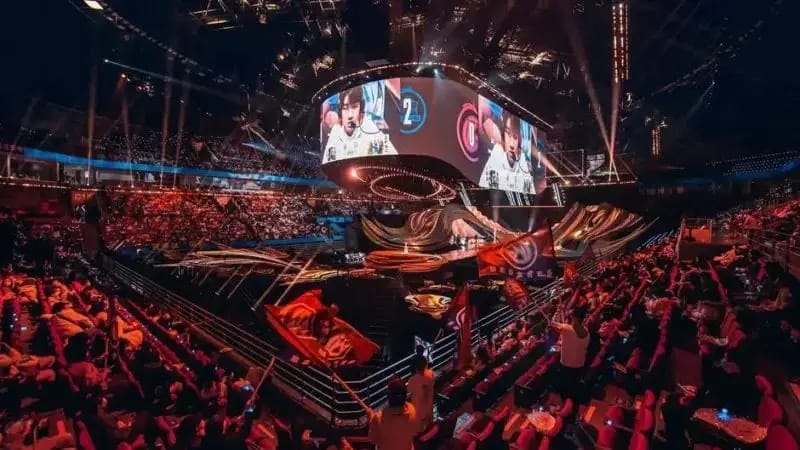
Dota 2 Esports Trends in 2024: The company behind Dota 2, announced major changes for the Dota 2 esports scene. This news has stirred excitement and concern among fans and players. This blog will cover the new season format and the rising issues with community casting.
New Season Format
Valve introduced a new season format to make the Dota 2 competitive scene more engaging. The changes aim to offer better opportunities for teams and a more structured schedule.
Three Major Tournaments
The Dota Pro Circuit (DPC) now features three major tournaments instead of two. These majors are spread throughout the year, offering more chances for teams to compete at high levels. Each major will be hosted in different regions, showcasing local talent and promoting global competition.
Regional Leagues
Valve has also revamped the regional leagues. The leagues are divided into six regions: North America, South America, Europe, CIS, China, and Southeast Asia. Each region has two divisions: Division I and Division II. The top teams from each region will qualify for the majors. This structure ensures that every region gets representation at major events.
Point System
The point system has been adjusted. Teams earn points based on their performance in regional leagues and majors. These points determine their qualification for The International (TI), the biggest annual Dota 2 event. The top 12 teams with the highest points will get direct invites to TI. This system rewards consistent performance throughout the year.
Community Casting Issues
While the new format is promising, community casting has faced several issues. Community casting allows fans to broadcast and commentate on matches. It has been a beloved part of the Dota 2 culture, but recent problems have surfaced.
Licensing and Permissions
Valve requires community casters to obtain licenses to broadcast DPC matches. This process is intended to protect the rights of official broadcasters. However, the licensing process has been slow and confusing. Many community casters have struggled to get permissions, leading to frustration and fewer community-cast matches.
Quality and Professionalism
Another issue is the quality of community casting. Not all community casters meet the professional standards set by official broadcasters. Some fans enjoy the casual, relaxed style of community casting, but others complain about unprofessionalism. This divide has led to debates within the Dota 2 community about what makes a good caster.
Competition with Official Broadcasters
Community casters also compete with official broadcasters for viewers. Official broadcasts often have better production quality and more experienced commentators. This competition can make it hard for community casters to attract and retain an audience. Despite this, many fans appreciate the unique perspectives and personal touch that community casters bring.
Impact on the Dota 2 Community
These changes and issues have had a significant impact on the Dota 2 community.
Positive Reactions
Many fans and players are excited about the new season format. The additional major tournament means more high-stakes matches to watch and enjoy. The regional leagues give more exposure to teams from different parts of the world. This diversity is seen as a positive step for the growth of Dota 2 esports.
Concerns and Criticism
On the other hand, the community casting issues have raised concerns. Fans worry that the slow licensing process will discourage community casters. They fear this will lead to fewer community-cast matches, reducing the variety of content available. Additionally, debates about the quality and professionalism of community casters continue to divide the community.
Valve’s Response
Valve has acknowledged these concerns and promised to address them. They plan to streamline the licensing process to make it easier for community casters to get permissions. Valve also aims to provide more support and guidelines to help community casters improve their quality. These steps are intended to balance the needs of official broadcasters and community casters.
Looking Ahead
The changes in the Dota 2 esports scene are set to shape the future of the game. The new season format aims to create a more competitive and exciting environment. However, the issues with community casting need to be resolved to maintain a vibrant and inclusive community.
Growth Opportunities
The new format provides growth opportunities for teams and players from all regions. With more major tournaments and a structured point system, every match becomes crucial. This encourages teams to perform their best throughout the year, leading to higher-quality games for fans to enjoy.
Community Involvement
Community casting remains a vital part of the Dota 2 experience. Fans hope that Valve’s efforts to improve the licensing process and support casters will pay off. A strong community casting scene can complement official broadcasts and offer diverse perspectives.
Balancing Act
Valve faces the challenge of balancing the professional standards of official broadcasts with the inclusivity of community casting. Both are essential for the growth and health of the Dota 2 esports scene. Finding this balance will be key to maintaining a thriving and passionate community.
John Abraham’s Vedaa Locks Release Date, to Clash with Allu Arjun’s Pushpa 2: The Rule